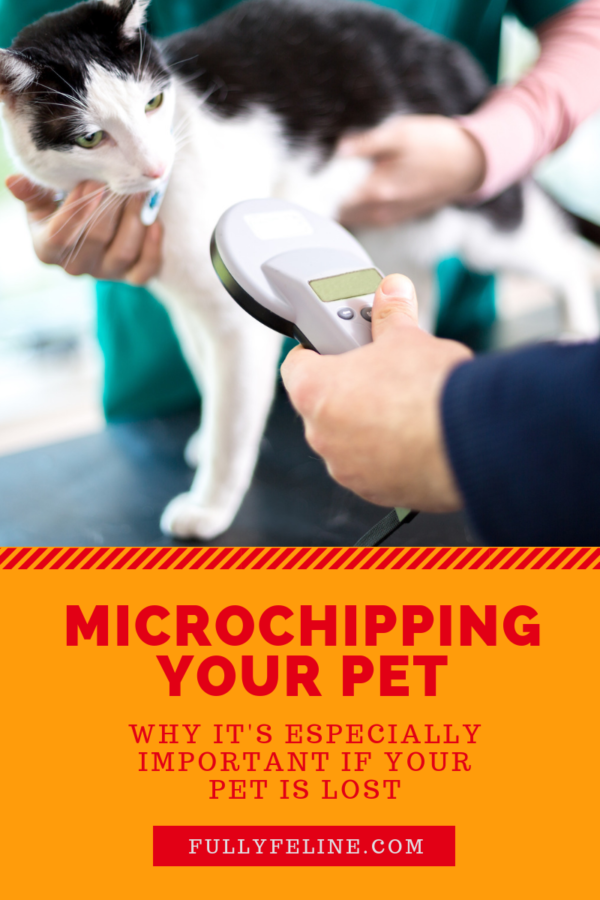Pet parents need to do all they can to ensure their cat doesn’t become a statistic. Identification tags or collars can get lost when a cat is outdoors. Improvements in technology have made it easier to bring about pet-parent reunions when a cat has a microchip.
The American Veterinary Medical Association (AVMA) conducted a study of 7,700 dogs and cats in animal shelters. Cats without microchips went home 1.8% of the time. Microchipped cats went back home 38.5% of the time.
Dogs without microchips went home 21.9% of the time. Microchipped dogs went home 52.2% of the time.
Those animals microchipped but not returned to their owners was primarily due to missing or incorrect owner information in the microchip databases.
What Is A Microchip?
Microchips are small electronic devices encased in glass. They are the size of a grain of rice. The chip is injected between cat’s shoulder blades. They last a lifetime and can provide peace of mind. Microchipping your cat is only part of the process. It’s important to register your cat’s chip information on a database. Information includes the microchip number, the cat’s color, gender and the pet parent’s name, address and contact information.
Is Microchipping Dangerous For My Pet?
Newer microchips don’t migrate from their original injection site as often as older ones. There were concerns about links between microchips and Feline Injection Sarcoma (FIS), an aggressive form of cancer. Chronic inflammation, caused by giving shots at the injection site, can cause cancer in extremely rare cases.
Another common concern in the past was the issue of standardization as to reading the information on microchips. Not all scanners could read them in the past due to a variation of frequencies. Newer scanners read older microchips, European microchips, as well as ISO microchips.
Follow Up After Microchipping
If you adopt a pet, the rescue or shelter will often microchip the pet before he goes home. For pets not already microchipped, shelters that offer low cost pet medical care may charge a minimal fee. You can also make an appointment with your veterinarian to get your pet a chip. Costs to microchip commonly average $25-40.
Once your pet has a microchip, it’s important to check periodically to ensure the information is current and correct. The chip won’t be effective if you have the wrong number, or if your information is not in the database properly if your pet goes missing.
Updating Chip Information
When I adopted my dogs, the rescue group had them microchipped. I had to call the chip company, in this case Home Again. They took care of transferring ownership of the dogs from the rescue group to me. That was required so I could establish my contact information in their microchip database.
The dogs have collar tags with their chip number and the number of Home Again. That way, if someone finds a missing pet, they can call the chip company rather than taking them to have a chip scanned. Home Again will contact the owner on record in their database when a pet is found that has one of their chips.
If you have questions about the lost & found procedure of your pet’s microchip company, call or email to learn about the process. Also check to see if their is an annual charge to update pet database information or maintain their active status in the database.
If your pet is lost, and his collar is missing, anyone can take him to a vet office or shelter equipped with a chip scanner. The scanner reads the contact information in the database.
Does your pet have a microchip? Leave a comment and let us know your experience with microchips. We’d love to hear from you!






